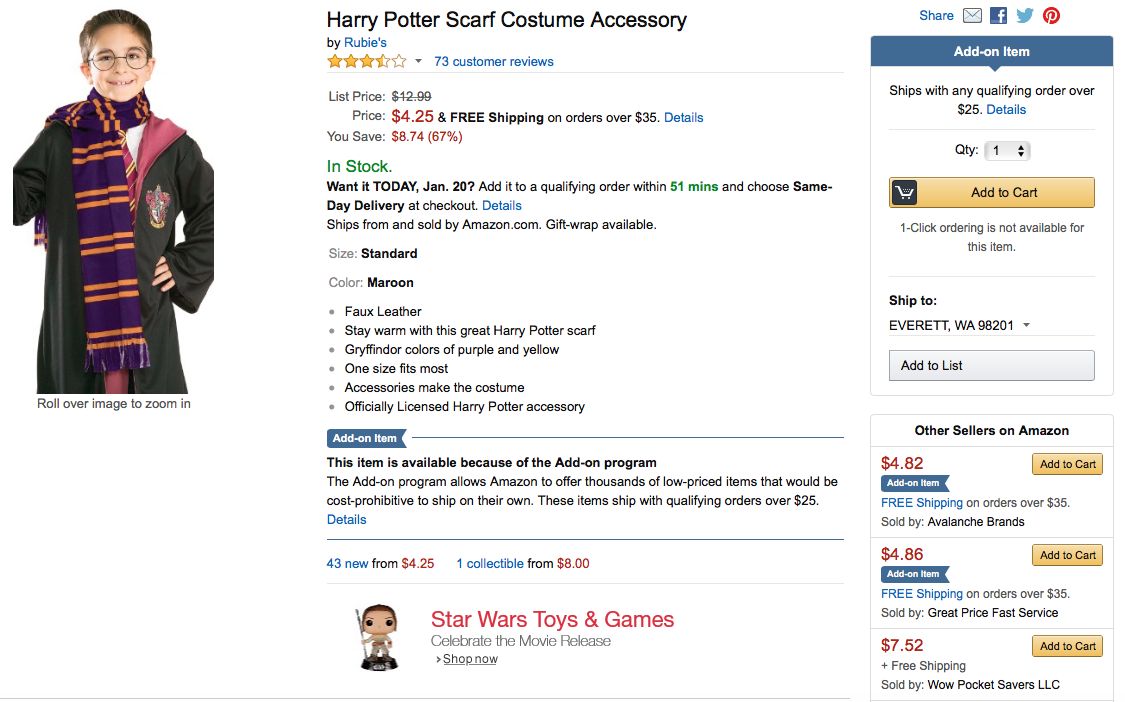When sales drop on Amazon it hurts and that's why it's so important to make sure you're capitalizing on all of the sales that you are getting right now by converting those customers into reviews. Salesbacker can help and it only takes a few minutes to set up one time and you're done. Try for free here. Now onto the blog post...
Evan checked his Seller Central account one more time before heading to bed. He always liked to get one final sales count at the end of the night. And once again, he was pleasantly surprised to see that his sales for the day were higher than the day before.
In the last two months, Evan had been noticing a positive trend in his sales numbers - they were going up! He had slowly climbed from 10 sales per day to 20 sales per day to over 30 sales per day, and the trend seemed to be continuing. Things were beginning to look up for the business he was trying to build in his spare time.
Evan closed his laptop with a smile, then headed to bed. He would sleep soundly tonight and dream of a future business with multiple products and glorious revenue.
But the next day, everything changed.
Evan did a quick sales check around 8 a.m. and his sales were at 0. He hadn’t had a 0 day in months, but knowing the up and down motion of Amazon selling, he told himself not to panic.
He checked back at noon. He was at 1 sale per day. Now he began to panic.
How could he drop from over 30 sales per day to only 1 in a 24 hour time period? Was this simply an anomaly, or was there something happening behind the scenes he didn’t know about? Could a hijacker be secretly stealing his sales? Could Amazon be punishing him for that thing he said about Jeff Bezos yesterday at work?
Unfortunately for Evan, he had no idea where to begin to look. As panic began to grow, he started to imagine his business suddenly crumbling, his inventory being liquidated, his dream of owning his own business going up in smoke.
Most Amazon sellers will experience this feeling once in their Amazon lifetime. Like Evan, the thrill of a high sales day can be drained quickly by an unexplained plummet in sales. And to make matters worse, many sellers have no idea where to begin to find an answer.
But today is your lucky day.
We’ve got a checklist that will help you find an answer. Now keep in mind, a simple drop in sales is completely normal for Amazon selling. If you’re selling 15 units per day then drop to 8 the next day, well...welcome to Amazon. But what we’re addressing is a plummet in sales - when a product which sells very well suddenly drops to an unusual level.
If you find yourself in the midst of a sales avalanche, we’d recommend using this checklist to figure out what caused it.
SALES SLUMP CHECKLIST
1. AM I IN THE MIDDLE OF A SEASONAL DIP IN MY NICHE / PRODUCT?
Now if you’re just starting to sell on Amazon, it may be difficult to answer this question. However, many products have a cyclical sales slump each year specific to its category. Keeping track of your monthly sales is a great way to see your yearly sales trends and to prepare for future changes in the market. For now, you might reach out to a friend or Facebook group and ask others in your niche if this is a common time for slower sales.
For example, some sellers may experience a sales dip in February for various reasons. The first time this happens, they may be tempted to blame their own efforts or their product. But the next time February arrives, they can either adjust their expectations or adjust their marketing to try to overcome the slump.
Though statistics are difficult to solidify, many online sellers will tell you that September and October are often slower online sales months. This is often due to the fact that school has recently started and holiday shopping is far from beginning. Sales will often begin to increase as you get closer to Black Friday. If you notice your sales are dropping from your summer highs, don’t freak out just yet. You may just be experiencing a normal sales slump.
2. DID I LOSE THE BUY BOX ON MY LISTING?
You’ll want to check to see if someone else has acquired the buy box on your listing. The “buy box” is the box on the right side of your listing where customers choose to “Add to Cart”.

Notice that below the Add to Cart box that there are other sellers on Amazon selling this exact same item. It is possible for one of those sellers to “win” the buy box from this seller and gain sales from their listings.
How do you keep your “buy box”? Amazon determines ownership of the buy box based upon (1) Price, (2) Availability, (3) Shipping options, and (4) Customer Service. In other words, the healthier your seller account and the more competitive your pricing, the more likely you’ll win the buy box.
How do you know if you have the buy box? There are two ways.
First, you can simply go to your listing and see if anyone else is trying to fulfill your product. If you notice another seller listed below the Add to Cart box, you may have competition that can steal the buy box from you.
Secondly, you can see if you’ve retained the buy box in previous days by accessing your account on Seller Central. Simply log into your account, scroll down to the Sales Summary on the right side of your page, then click on “View more of your sales statistics” below your summary.

On the next page, scroll down to the “By date” section on the left side of your Business Reports menu. Click on the “Detail Page Sales and Traffic” link.

Now your page will load a report showing your sales stats by each day of the month. The seventh column over will be the percentage of time you owned the buy box. If you notice that your percentage has dropped in the last day or two, you’ll want to see who else is selling your product online.

If you’re the only seller listing your product on Amazon, you have nothing to fear. However, on a personal note, I was surprised to find that another seller had purchased several units of my product (apparently during a promotion) and then listed them for resale on Amazon at a lower cost than me. Suddenly, we were losing the buy box from someone hoping to make a quick buck. Lowering our price was the key to winning it back.
3. DID I RECENTLY RECEIVE A POOR CUSTOMER REVIEW ON MY LISTING?
Imagine that a customer has come to your listing to check out your product, and they want to make sure it’s legitimate. So even though you have close to a 5 star review average, they scroll down to see what people are saying about their purchase. And there, sitting at the top of the review section is your latest customer review - a one star review stating that this product just wasn’t what they were expecting at all.
You can imagine, then, that customers can be scared away by the latest review being a poor one. So it’s a good idea to look at your listing during a sales slump to see if you’ve got a bad one waving to everyone at the top of your review section.
So many sellers lose track of their reviews and completely forget to check them regularly. That’s one reason Amazon sellers love Salesbacker. You can set it up to alert you anytime a poor review comes in, and it helps you gain more 5 star reviews from customers. If you’re not a Salesbacker user already, sign up for a free 30 day trial today.
4. DID A SALE OR PROMOTION FOR MY PRODUCT RECENTLY END?
Many times, Amazon sellers are really bad about creating systems for their business. For that reason, deadlines and end dates fall through the cracks.
When you see yourself suddenly hitting a major sales slump, you may want to check to see if something connected to your listing has expired. For instance, were you running a Christmas sale price to the end of December which raised holiday sales? This could explain why your January 1 sales suddenly dropped. Or did you offer a coupon code through another site that ended recently? These can easily explain the dip in sales.
You also may have an advertisement running on Facebook, Pinterest, or other social media platforms. Did that ad campaign recently expire causing your traffic to slow which in turn caused your sales to drop?
Think through as many of these sales related expiration dates as possible and investigate.
5. DID SOMETHING GO WRONG WITH MY AMAZON SPONSORED ADS?
If you use Amazon’s PPC ads, you know that they’re a huge source of traffic and sales. If you’re not using Amazon PPC yet, you need to. To get started, check out our other article, “How to Set Up an Amazon PPC Campaign” where we give you step-by-step instructions to setting up your first campaign.
If you’re running Amazon PPC, this is a great place to look for the answer to your sales slump. Two common scenarios that have caused Amazon sellers great anxiety are:
- Amazon PPC payment was declined. If your bank account is running low, it could cause Amazon’s payment processing to be declined. If this occurs, you will not receive any notification from Amazon. Your ads will simply stop running.
- Amazon Sponsored Ads reached its end date. I always recommend setting an end date to your Amazon PPC ads when you’re first getting started, but when you do, you have to remember which end date you chose. If you’re experiencing a sudden decline in sales, check to be sure your campaign hasn’t ended.
6. DID MY GOOGLE ADWORDS CAMPAIGN TURN OFF?
Outside of Amazon Sponsored Ads, many sellers turn to Google AdWords to send traffic to their listing. And if you work hard at it, Google can be a tremendous source for traffic and sales for your product.
So you might want to just check to be sure that your Google AdWords account didn’t turn off for some reason. Your AdWords account can be suspended if you your product doesn’t comply with their criteria, your payment for your past AdWords was rejected, of your campaign reached the end date.
Conclusion
There are two sources of encouragement for Amazon sellers who experience a sudden sales plummet. First, it’s comforting to know that you’re not alone. Every seller has experienced the anxiety of watching sales slide off the cliff. Thousands have experienced it and lived to see the day. Heck, many of them grew stronger from it. You can, too.
Secondly, it’s comforting to know exactly where to start looking for answers. Hopefully, these six checklist questions will help you get started with the most common sources of sudden sales decreases. And the longer you stay at it, you’ll be able to add to this list.
If these questions helped you in a time of need, don’t forget to share this checklist with your fellow Amazon sellers.
Sometimes Amazon sales drops are temporary and so it's important that you capitalize on each and every sale. It's crucial to convert your everyday customers into reviewers of your products and the best way to do that is by simply asking your customers for a review after they buy your product. Salesbacker can help you ask your customers for reviews and it's free to start. Click here to try Salesbacker.







